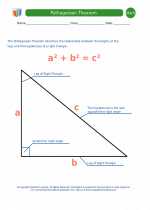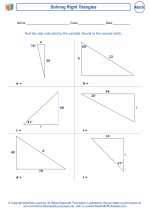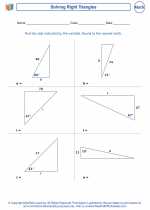Pythagorean Theorem
The Pythagorean Theorem is a fundamental principle in geometry that describes the relationship between the sides of a right-angled triangle. It states that the square of the length of the hypotenuse (the side opposite the right angle) is equal to the sum of the squares of the lengths of the other two sides.
Formula
The Pythagorean Theorem can be expressed as the following formula:
c2 = a2 + b2
Where c is the length of the hypotenuse, and a and b are the lengths of the other two sides.
Example
For example, if a right-angled triangle has side lengths of 3 and 4, the length of the hypotenuse can be found using the Pythagorean Theorem as follows:
c2 = 32 + 42
c2 = 9 + 16
c2 = 25
c = √25
c = 5
So, the length of the hypotenuse is 5.
Study Guide
- Understand the concept of a right-angled triangle.
- Memorize the formula: c2 = a2 + b2
- Practice using the formula to find the length of the hypotenuse in different triangles.
- Remember that the Pythagorean Theorem only applies to right-angled triangles.
- Be familiar with using square roots to solve for the length of the hypotenuse.
By understanding and practicing the Pythagorean Theorem, you will be able to solve problems related to right-angled triangles and apply this fundamental concept in geometry.
.◂Math Worksheets and Study Guides Seventh Grade. The Pythagorean Theorem

 Study Guide
Study Guide
 Worksheet/Answer key
Worksheet/Answer key
 Worksheet/Answer key
Worksheet/Answer key
 Worksheet/Answer key
Worksheet/Answer key
 Worksheet/Answer key
Worksheet/Answer key
 Worksheet/Answer key
Worksheet/Answer key
 Worksheet/Answer key
Worksheet/Answer key
 Worksheet/Answer key
Worksheet/Answer key
 Worksheet/Answer key
Worksheet/Answer key
 Worksheet/Answer key
Worksheet/Answer key
 Worksheet/Answer key
Worksheet/Answer key
